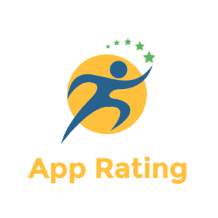By 2019, simply over half of the world’s inhabitants was related to the web. This yr, that section is ready to rise to 60%, or 4.72 billion people. For the previous twenty years, most of these customers have been concentrated within the developed world, the place a mix of disposable revenue, top quality of life, and good infrastructure made it comparatively simple to entry the web. These nations at the moment are near reaching saturation ranges in connectivity and it’s rising economies’ flip to catch up.
Because the populations of locations like Germany, the U.S., and France age, the younger and eager-to-connect will more and more be present in nations like India, Nigeria, and Peru. In contrast to their economically advantaged counterparts, nevertheless, getting that second half of the planet on-line gained’t be as simple.
There are lots of elements contributing to the connectivity divide between wealthy nations and rising economies. Infrastructure, training, and distribution of assets are just one facet of the issue. However at Torii Studio, we all know {that a} vital subset of the worldwide inhabitants can not take part on the web just because the web has not been constructed for them.
The online was constructed with its first billion or so customers in thoughts. That first wave was dominated by Western people with excessive technological literacy, dependable connections, and state-of-the-art units. The web’s future lies in mobile-first people from non-Western cultures that wrestle with gradual connections, unreliable infrastructure, and frills-free units. This has created a big accessibility hole that’s rapidly turning into one of many greatest limitations to on-line participation in rising economies.
Making the online accessible for the following billion customers
Accessibility is commonly correlated with optimizing merchandise, locations, and experiences for people with disabilities like poor imaginative and prescient or listening to impairments. However {hardware}, software program, environments, language, and tradition can all current potential obstacles to totally partaking with know-how.
“Connectivity points with out accessibility assist break the entire consumer expertise,” explains Nithya Sambasivan, a researcher centered on designing for low-income customers. Universally accessible experiences are the important thing to making a extra inclusive net. Bringing the infrastructure of low and middle-income nations as much as par with wealthier nations could also be out of the palms of designers and builders, however constructing web sites and apps that may function in these environments shouldn’t be.
Our Studio just lately had the chance to construct a web site for our companions at WellDone, particularly to optimize their web site to be used in rural places all through Southeast Asia and Africa. WellDone is a non-profit working to make sure that rural communities have constant entry to scrub water by gathering knowledge on the efficiency and operational standing of hand pumps in water wells. Most hand pumps break down inside a yr of building, leaving their communities with out entry to potable water. WellDone’s initiative seeks to handle a comparatively unknown downside to individuals in economically advantaged nations, however that commonly impacts the standard of life for hundreds of thousands across the globe.
The corporate reached out to us for assist with renovating the dashboard software that their floor groups use to observe hand pumps. They wanted a totally optimized system that would function successfully on cellular units and in rural places with low connectivity.
Our group needed to work round most of the similar challenges that designers and builders face when constructing digital merchandise for the following billion customers. Under we break down a few of the greatest ones:
1. Poor Connectivity
Low connectivity is probably probably the most vital constraint when designing for the following billion customers. Many components of the creating world, notably rural areas, expertise gradual or intermittent connectivity. In response to a report by GSMA, a cellular trade group, 4G protection reaches just below a 3rd of individuals residing in low-income nations. In truth, a large portion of rural areas in those self same nations — round 19% — is barely coated by gradual 2G networks.
There are financial elements at play too. Web entry is pricey for most people in these locations. Pre-paid plans are nonetheless frequent, customers are cautious of their knowledge utilization, and other people will spend extended intervals offline till they will afford to pre-pay for entry. This all has a big impression on efficiency and customers’ on-line experiences. Apps that depend on excessive speeds or are data-intensive is not going to carry out effectively in these settings and fall out of favor with pissed off and cost-conscious customers. Google, Fb, and Twitter have all taken word of this and launched lite variations of their platforms to supply customers with low connectivity high-quality experiences. These leaner platforms are data-friendly, optimized for smaller screens, and have offline use capabilities.
Torii Studio took an identical method as these firms by constructing a lite model of WellDone’s platform. Their web site’s earlier model had been designed for high-speed web connections that aren’t out there within the distant places the place they function. This created efficiency points underneath low connectivity and on cellular units.
Options would render in batches as soon as all of the content material had loaded and customers must watch for prolonged intervals with a clean display screen and no indications of progress. Our group constructed a brand new mobile-optimized dashboard that progressively renders content material and makes use of placeholders for any info that has not but loaded. This provides customers clear indications of progress and permits vital options to load sooner than non-critical content material.
2. Decrease specification units
Cell phones are the first gateway into the online for many of the creating world. However these units are removed from the glossy smartphones which can be commonplace in wealthy nations. They’re previous, low-specification devices with brief battery lives and small recollections. Mixed with poor connectivity, they end in a constrained expertise for his or her customers and a problem for designers and builders.
Accessibility — particularly components like distinction, textual content measurement, and colour — issues right here. To make apps and web sites which can be really accessible for these customers, we should be certain that a design can render appropriately on low-specification units with previous working programs and small screens. Maintaining battery utilization and app sizes low helps customers that consistently wrestle with restricted reminiscence house, the necessity for SD playing cards, and shorter battery lives.
Since WellDone’s dashboard works as a web-based software, our group centered on accessibility options comparable to colour, distinction, and different enhancements in UX to enhance the navigation performance for customers with lower-specification units. The map characteristic was one of many areas that noticed probably the most enhancements in UX. The unique structure was cluttered and made it troublesome for WellDone’s operators to know the data introduced. We solved this by including a clustering characteristic that led to a cleaner and better-organized structure. This created an accessible and responsive expertise that extra simply allowed WellDone’s groups to entry the data they wanted.
3. Design and technological literacy
People residing in rising economies have a really totally different expertise with know-how than their economically advantaged counterparts. They’re usually mobile-first and have possible by no means accessed the web from a desktop earlier than. Linguistic, academic, and cultural limitations maintain a large a part of the online out of their attain. Over a 3rd of them cite low literacy and lack of digital abilities as their main barrier to utilizing the web.
Fixing these accessibility points is much more difficult than putting in cellular phone towers, subsidizing connectivity, or electrifying rural areas. These efforts must be mixed with enhancements in training and digital literacy to assist future customers profit from their on-line experiences. The excellent news is that accessible and inclusive product-building can do so much to bridge that hole within the meantime.
Constructing for this new wave of net customers requires restructuring our method to design, interactivity, and consumer expertise. Not solely do we have to optimize digital experiences for slower connections and lower-specification units; we additionally have to adapt our merchandise to swimsuit totally different cultures, environments, and wishes. Understanding these customers and together with them within the constructing course of is vital to assembly their wants and offering them with higher, extra satisfying on-line experiences.
Constructing a greater digital future for the following billion
Almost 85% of the world’s inhabitants lives in areas the place poor connectivity, gradual units, or an absence of tech literacy characterize vital limitations to web entry. And but, solely a small portion of the online has been constructed with their wants in thoughts.
Progress has been made as tech firms race to realize market share in rising economies. However WellDone’s initiative exhibits that there’s nonetheless a giant want for options to vital issues past entry to streaming or social media. The pandemic has additional elevated the price of not having the ability to entry the online and can little question hinder a few of the progress made in the course of the previous decade.
It additionally makes WellDone’s work — and ours — extra pressing than ever earlier than.
At Torii Studio, a giant a part of our mission entails collaborating with those that are utilizing design and know-how to construct a greater world. Our group may be very proud to have outfitted WellDone with the precise instruments to assist the communities they serve and increase their companies even additional. WellDone plans to make use of this new and improved system to increase its digital presence, collaborate with extra authorities and nonprofit entities, and combine machine studying into its operations. We hope that they will proceed enhancing individuals’s high quality of life and that their work evokes others to see design and know-how as instruments for constructing a greater world for all.

